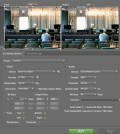Quick Tips to Secure Company Media

No matter what type of media your company shares with its team, your videos and other content should be secure. Here are some quick tips to help you secure your company’s content right now.
Secure your video content based on categories.
We’ve found that the most common categories of content organization for security are as follows:
-
Institution – Settings on institution-wide content will apply to all of your organization’s media. However, most companies require different settings from one office to another, or even between departments and users. It is likely your organization will need to categorize content more granularly than for your overall institution.
-
Geographic locations – Many companies set where videos can and cannot be viewed using IP addresses or IP Subnet restrictions.
-
Divisions or staff teams – If your company has different security needs within departments across locations (think research and development vs. sales and marketing), consider which content should be available to external viewers, and which is purely confidential.
-
Individual videos or users – Even within departments, there can be varying levels of clearance for some content when individual videos or users may require their own settings. When individual videos can have their own settings and analytics, managers can view who has seen which videos and for how long.
Designate specific security settings for each type of video.
Based on how your media is categorized, different content may require its own viewing restrictions. For each individual media category, ask yourself these questions:
-
Should these videos or video playlists be restricted to specific users or groups?
-
Should these videos be protected by passwords?
-
Should viewing be restricted to our CMS or LMS for training purposes?
-
Should video viewing be restricted to specific computers or networks?
-
Do we need to limit the number of concurrent viewers due to bandwidth or license limitations?
-
Should we restrict by users or groups?
-
Do we have the IT resources in house to host our own platform, or do we need to use a cloud service?
The answers to these questions will help you determine the right security settings for all of your company’s video content.
Implement a video platform with robust security features.
Of course, organizing your video content and identifying each type of content’s unique security needs is not effective without a video platform that allows you to restrict viewing by users or groups, restrict viewing to an individual video or playlist, password-protect videos, restrict playback in your company’s CMS and much more.
Self-hosted deployment may be a good option for your company if it’s important for your internal team to maintain absolute control over your media content. When you self-host a video platform, your content will only stream across your local area network. That means confidential internal content will never go outside your company firewall.
Ensemble Video’s range of security features is unmatched. You can see a list of Ensemble Video’s security features here. Or, you can access our resource, “A Guide to Securing Your Company’s Video Content,” to learn more about effectively securing all of your company’s most sensitive internal media.











You must be logged in to post a comment Login